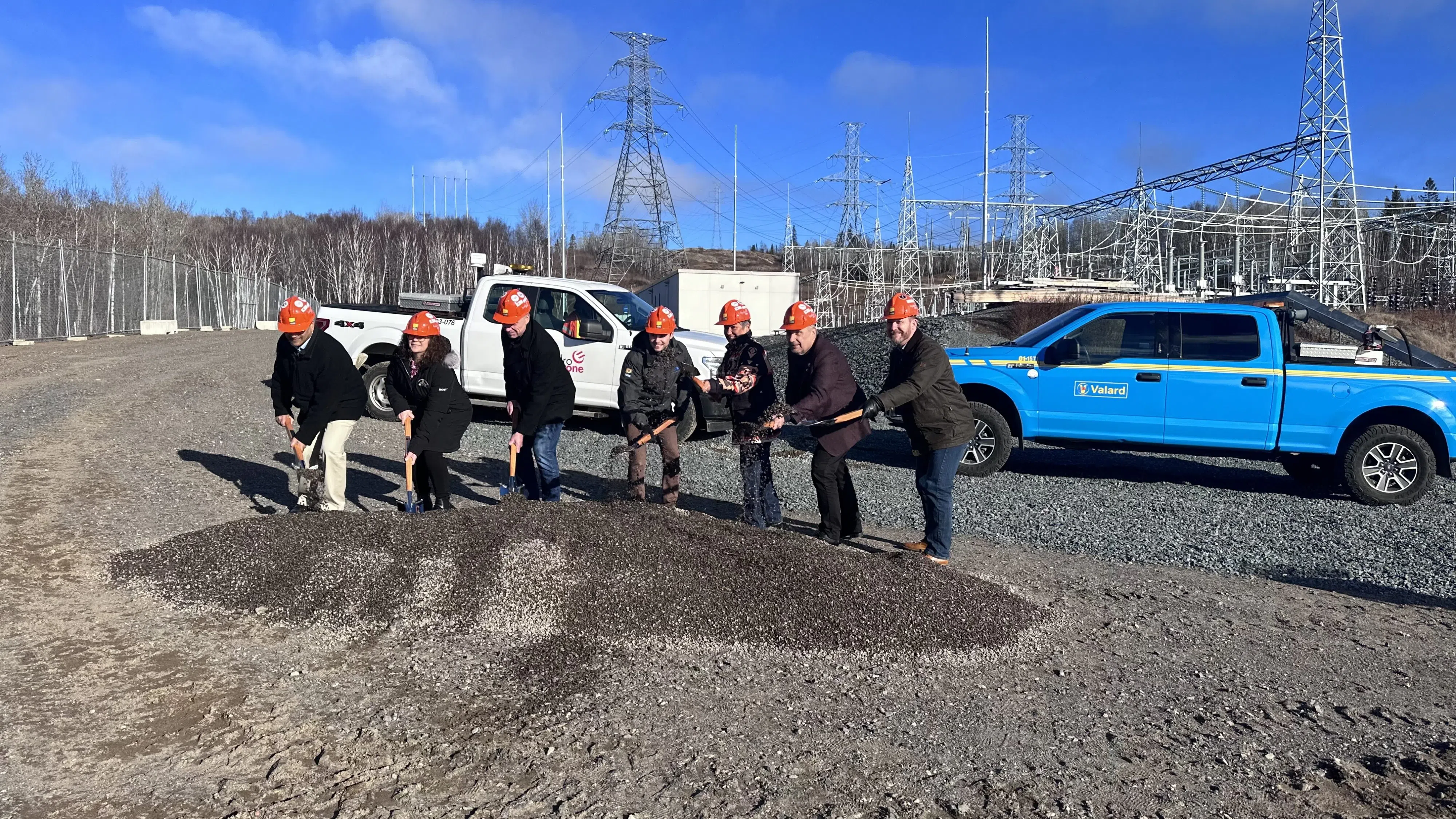Hydro One and its nine First Nations partners have broken ground on the Waasigan Transmission Line project.
“Waasigan changed the way we build new large-scale transmission line projects with the launch of our industry-leading 50-50 equity partnership model,” said President and CEO of Hydro One, David Lebeter. “It’s an example of the progress we can achieve when we listen, build meaningful partnerships, work together and do things differently.”
In the new 50-50 equity partnership model, First Nation partners have agreements in place to invest a 50 per cent equity stake in the transmission line component of the Waasigan Transmission Line project.
The nine First Nation partners include Lac des Mille Lacs First Nation and eight First Nation communities represented by Gwayakocchigewin Limited Partnership (GLP).
“This day marks a major achievement for Gwayakocchigewin Limited Partnership. We have worked tirelessly over the past several years with our community Elders, leadership and members to ensure that this project respected our Anishinaabe teachings, protected our cultural values and would be undertaken in a way to protect and preserve our land for all future generations to come,” said the President of GLP, Daniel Morriseau.
GLP First Nation communities include Eagle Lake First Nation, Fort William First Nation, Gakijiwanong Anishinaabe Nation, Lac Seul First Nation, Nigigoonsiminikaaning First Nation, Ojibway Nation of Saugeen, Seine River First Nation and Wabigoon Lake Ojibway Nation.
“We started using the word partnership, but I will be honest at that time Hydro One did not really know what a partnership meant,” explained Lebeter. “It was through the actions of our partners that are here today with us, our nine indigenous partners that you taught us what that word means. It was through your patience, your persistence, that you made us go back and reflect on what the word partnership means and what the word economic reconciliation means.”
“(The First Nations partners have) showed us how to look after the land, you’ve brought your traditional knowledge forward, and you’ve stood beside us as we have to navigate the very complex phases of permitting, getting consent from partners and the public to build the transmission line, and you’ve been with us all along the way, and I look forward to future collaborations where we continue to build on this word partnership and make it a living, breathing thing that we can all understand.”
Waasigan was the first 50-50 Indigenous Partnership with Hydro One, but other upcoming projects will offer more opportunities.
“We launched our partnership and it’s become a standard for us now we have nine transmission projects, eight in addition to this, one that we’re working on in different phases of design and construction and each one of those will have the same partnership opportunities for the Indigenous nations whose traditional territories we traverse,” added Lebeter.
According to Hydro One, the new transmission line will bring an additional 350 megawatts of energy to the region or enough power for two Thunder Bays.
“That energy is important because it creates an opportunity for new mining, new forestry, new manufacturing it will support homes, schools, and hospitals and it will create a clean energy future for generations to come,” said Lebeter. “In a simple word, what this transmission line does in the infrastructure around us that enables our life, it’s hard to imagine our way of life today without electricity.”
The Independent Electricity System Operator predicts electricity demand will increase approximately 75 per cent across Ontario by 2050.
“Ontario needs to generate, store and transmit more power as we face unprecedented growth. It is a priority for our government to move with speed to expand and connect clean and affordable energy to our northern communities,” said the Minister of Energy and Electrification, Stephen Lecce. “This project will connect our farthest communities to clean and reliable power for years to come while strengthening the grid in the north and creating more jobs and opportunities for generations to come.”
Construction of the line is expected to create 400 new jobs and support community, economic and industry growth, including mining and forestry operations.
The groundbreaking ceremony was for phase one of the project which will see a new double-circuit 230-kilovolt transmission line from Lakehead Transformer Station (TS) in Shuniah to Mackenzie TS in Atikokan, with a targeted in-service date as close to the end of 2025 as possible.
Phase two of the project will focus on the construction of a new single-circuit 230-kilovolt transmission line from Mackenzie TS to the Dryden TS with hopes the line will be in service in 2027.
The construction work is being done by Valard Construction LP.





